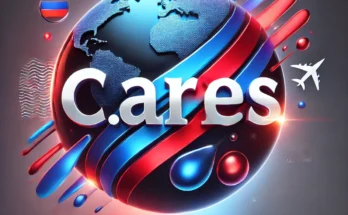Analysis I-134A Processing Time in 2023
Analysis I-134A Processing Time. The Form I-134A, officially known as the “Declaration of Financial Support,” plays a critical role in U.S. immigration processes, particularly for those seeking to sponsor a noncitizen’s entry into the United States. In 2023, the processing time for I-134A has become a focal point for both applicants and sponsors due to the impact of global events, changes in U.S. immigration policies, and backlogs in the immigration system. This analysis will delve into the factors influencing the processing time for I-134A in 2023, the average wait times, and the implications for applicants and sponsors.
Overview of I-134A Form
The I-134A form is required for individuals who wish to sponsor a foreign national, usually a family member or friend, who is seeking to enter the United States temporarily. The form serves as a financial affidavit, where the sponsor pledges financial support for the beneficiary during their stay in the U.S., ensuring that the beneficiary does not become a public charge.
Factors Influencing Processing Time
Several factors have contributed to the variation in I-134A processing times in 2023. These include:
Volume of Applications: The sheer number of applications submitted plays a significant role in processing times. In 2023, there has been an increase in the number of I-134A filings due to global instability and humanitarian crises, leading to a surge in asylum seekers and refugees who require sponsorship.
USCIS Staffing and Resources: The United States Citizenship and Immigration Services (USCIS) has faced challenges with staffing shortages and resource allocation. The agency’s ability to process applications efficiently depends heavily on the availability of trained personnel and financial resources.
Analysis I-134A Processing Time
Policy Changes and Executive Orders: Changes in U.S. immigration policy, often influenced by new executive orders or legislative changes, can lead to adjustments in processing priorities. For example, shifts in refugee admissions caps or changes in the public charge rule can directly affect how quickly I-134A forms are processed.
Global Events: Events such as the COVID-19 pandemic, geopolitical conflicts, and natural disasters have all contributed to fluctuations in processing times. These events can lead to an influx of applications, further straining USCIS resources.
Average Processing Time in 2023
The average processing time for I-134A in 2023 has varied depending on the above factors, with estimates ranging from a few weeks to several months. As of mid-2023, USCIS reported that the typical processing time was between 2 to 5 months. However, some applicants experienced longer delays, particularly those requiring additional scrutiny or who submitted incomplete applications.
Standard Processing: The typical processing time for a complete and correctly filed I-134A was around 2 to 4 months in most cases. This time frame accounts for initial processing, background checks, and verification of the sponsor’s financial stability.
Delays: Delays were common, especially for applicants from countries with heightened security concerns or those affected by recent changes in immigration policy. In some cases, processing times extended beyond 6 months, leading to frustration and uncertainty for both sponsors and beneficiaries.
Analysis of I-134A Processing Time
Impact on Applicants and Sponsors
The processing time for I-134A has significant implications for both the sponsors and the beneficiaries:
Financial Strain on Sponsors: Prolonged processing times can lead to financial strain on sponsors who may have planned their budgets based on an expected timeline. Delays can result in additional costs, such as maintaining support for the beneficiary in their home country while waiting for approval.
Emotional and Psychological Impact: For beneficiaries, especially those fleeing persecution or extreme hardship, extended waiting times can lead to increased anxiety and uncertainty. The delay in reunification with loved ones or the possibility of resettlement in the U.S. can have profound emotional consequences.
Legal Implications: Longer processing times may also affect the legal status of the beneficiary in their home country, particularly if their visa or other legal protections are set to expire. This can lead to precarious situations where beneficiaries are left without legal recourse or protection.
Strategies to Mitigate Delays
Several strategies can be employed by sponsors and beneficiaries to mitigate delays in the processing of I-134A forms:
Complete and Accurate Submission: Ensuring that all required information is provided accurately and completely at the time of submission can prevent unnecessary delays. Incomplete forms are a common cause of prolonged processing times.
Analysis I-134A Processing Time
Expedited Processing Requests: In certain circumstances, such as imminent danger to the beneficiary, it may be possible to request expedited processing. However, these requests are granted at the discretion of USCIS and require substantial justification.
Regular Follow-ups: Sponsors and beneficiaries can regularly check the status of their application through the USCIS online portal. In cases where the processing time exceeds the normal range, it may be beneficial to contact USCIS directly to inquire about the delay.
Legal Assistance: Consulting with an immigration attorney can help in navigating the complexities of the I-134A process, particularly if there are unique circumstances or complications that could affect processing times.
USCIS Initiatives to Address Backlogs
In response to the growing backlogs and delays in processing, USCIS has implemented several initiatives aimed at improving efficiency:
Increased Staffing: USCIS has been working to increase staffing levels to handle the growing volume of applications. This includes hiring additional officers and providing specialized training to improve processing times.
Technological Upgrades: The agency has also invested in technological upgrades to streamline the application process. Including enhancements to the online submission and tracking systems. These improvements are intended to reduce manual processing times and minimize errors.
Analysis I-134A Processing Time
Policy Adjustments: USCIS has periodically adjusted its policies. In order to prioritize certain types of applications, such as those related to humanitarian crises. Which can help in reducing processing times for the most urgent cases.
Future Outlookde
Looking ahead, the processing time for I-134A in 2023 is likely to continue fluctuating based on external factors. Such as global events and changes in U.S. immigration policy. However, the steps taken by USCIS to address backlogs. And improve efficiency may lead to more predictable processing times in the future.
Conclusion
The processing time for the I-134A form in 2023. It reflects the complex interplay of global events, policy changes, and administrative challenges. While some applicants may experience significant delays, understanding the factors that influence processing times. And taking proactive steps can help mitigate some of the uncertainties. As USCIS continues to adapt to changing circumstances, it is hoped that processing times will become more consistent. Allowing for smoother transitions for sponsors and beneficiaries alike.
Another PJ Multi Services Company
Written by Patrick Jacotin - Senior Editor



